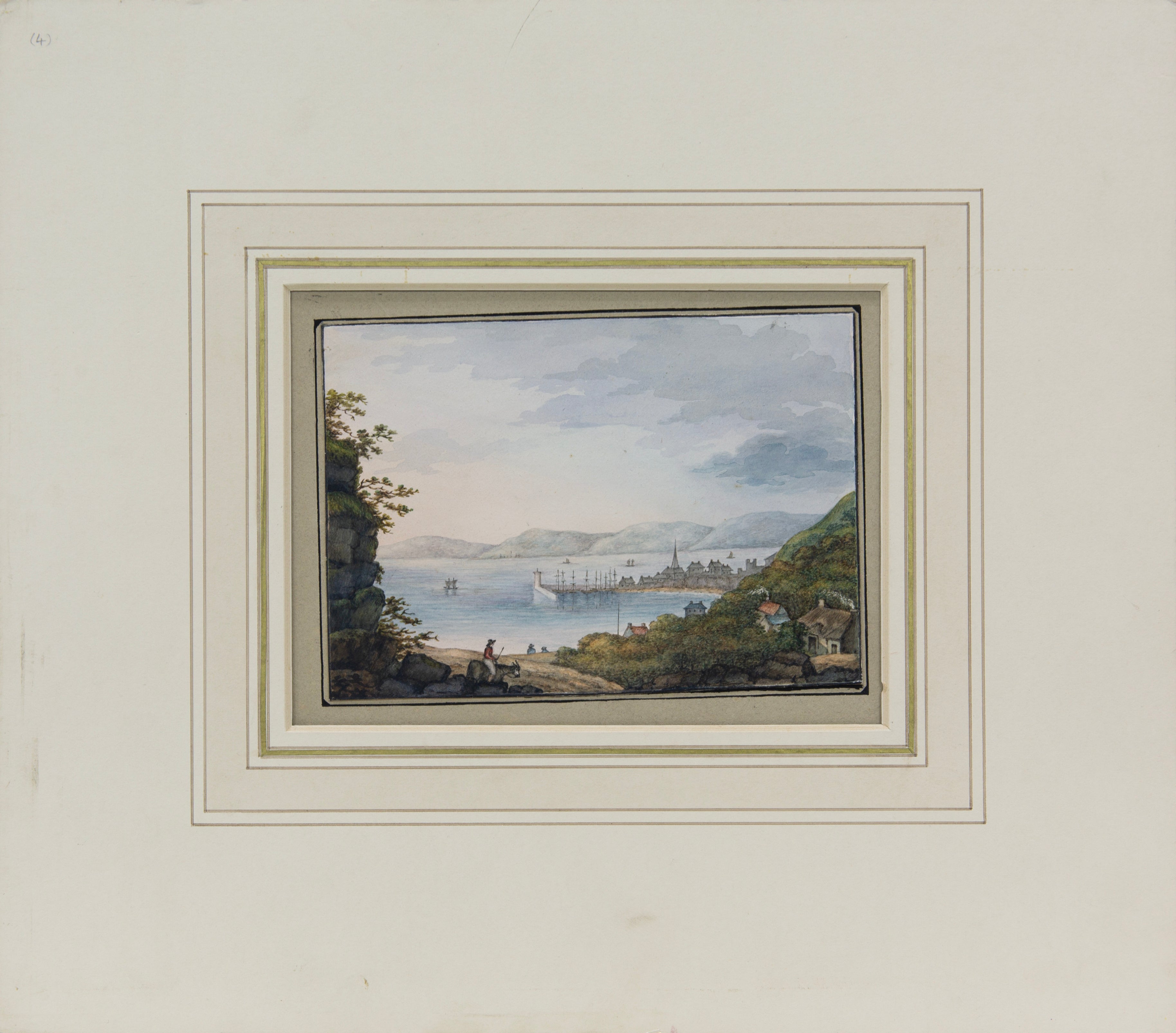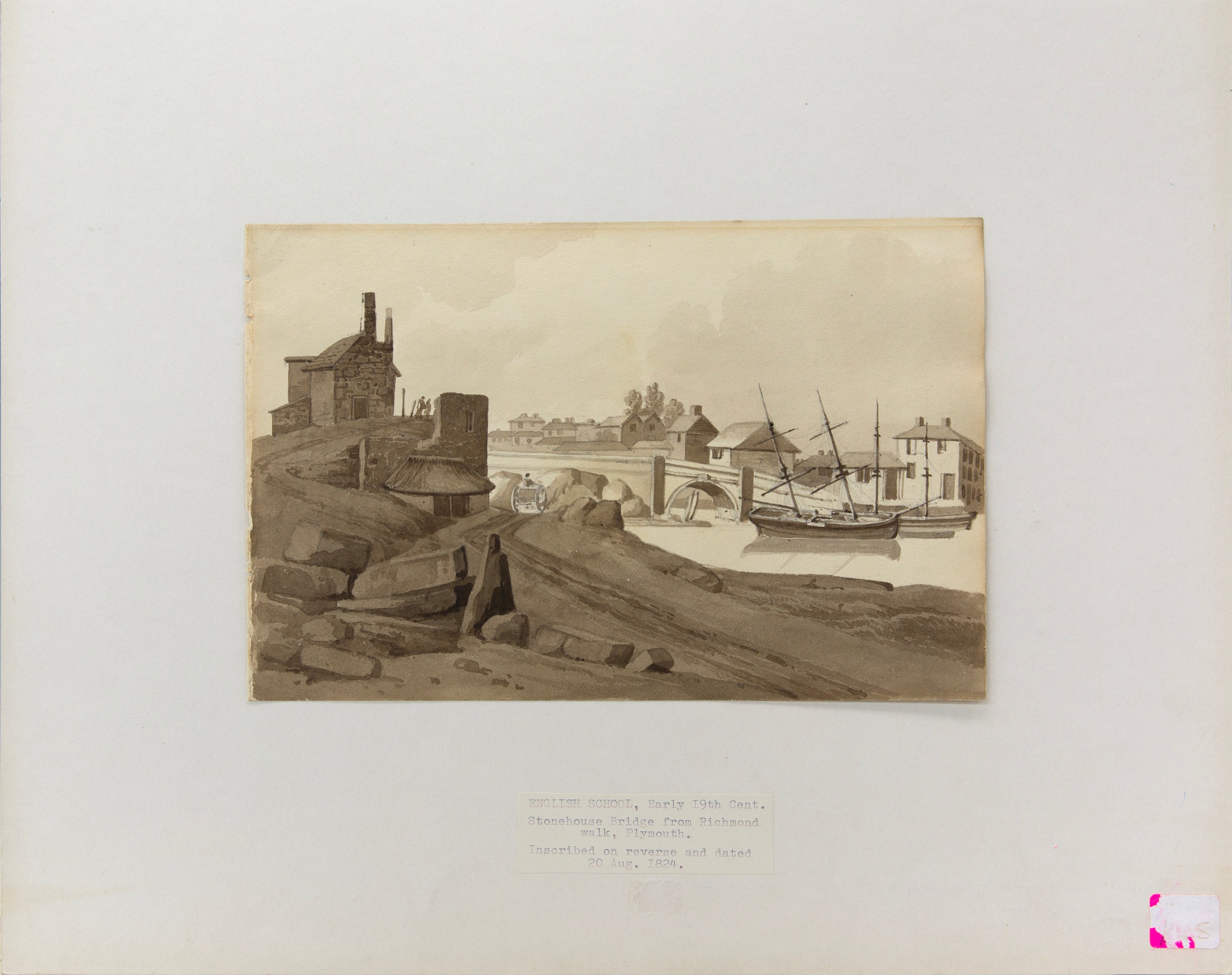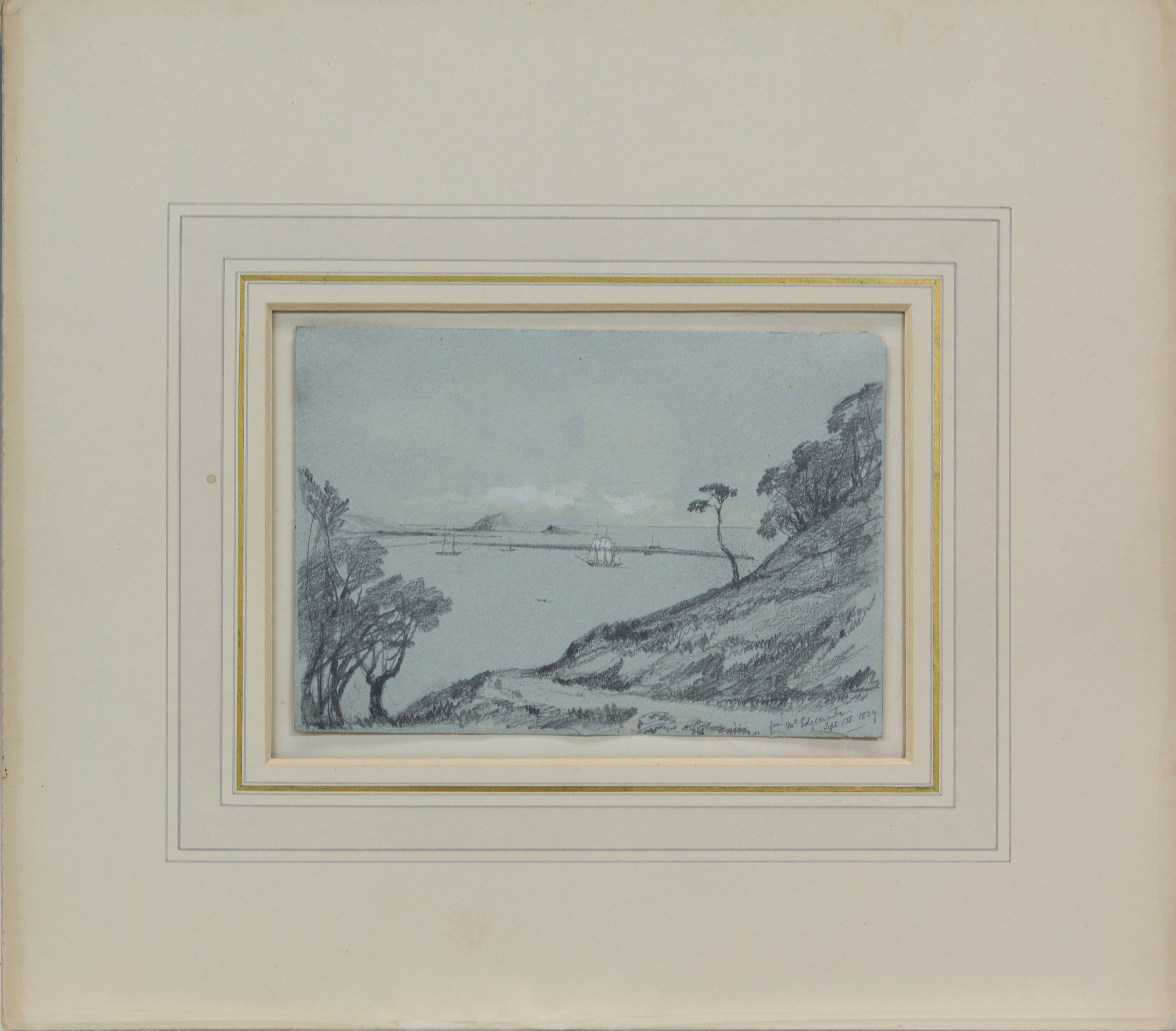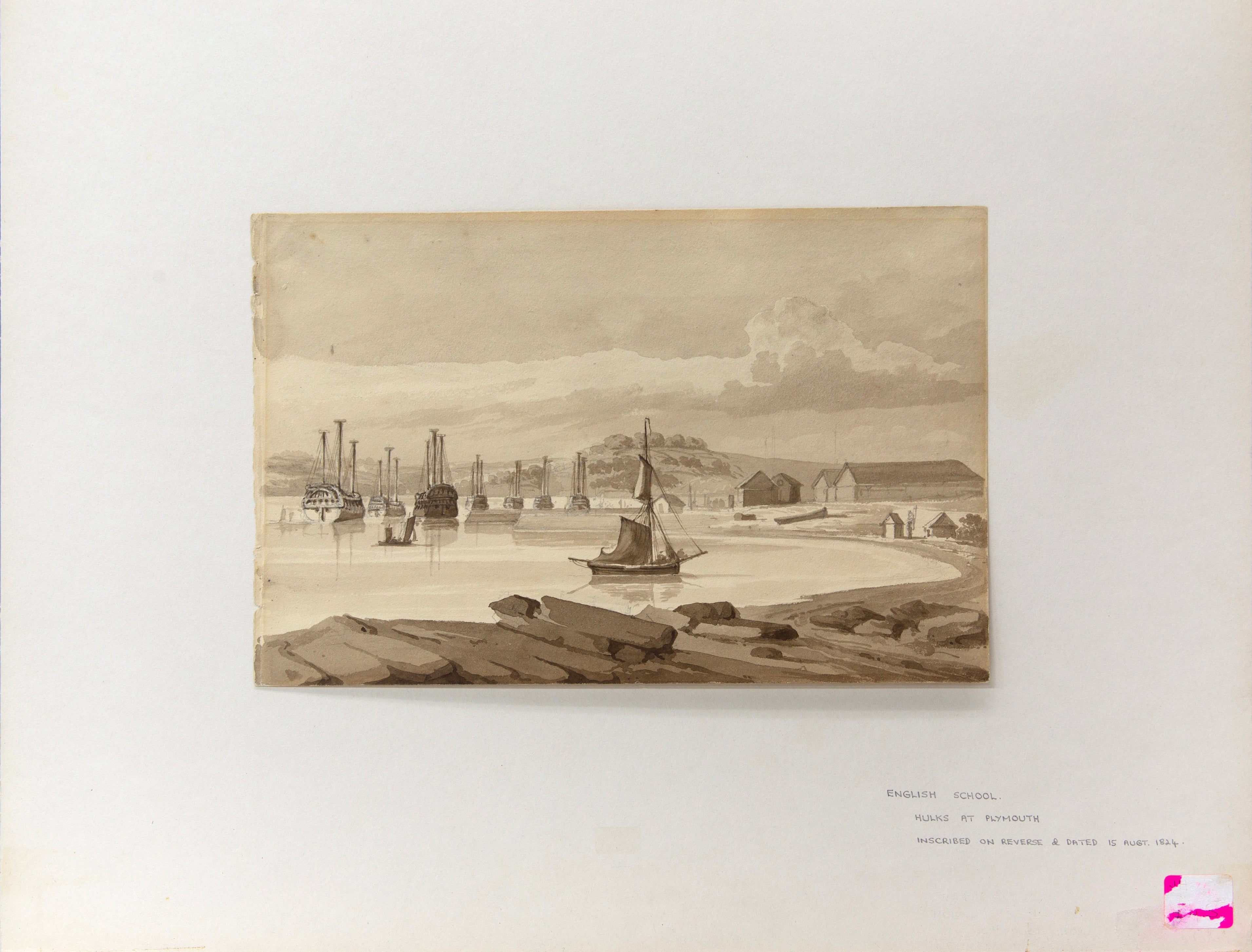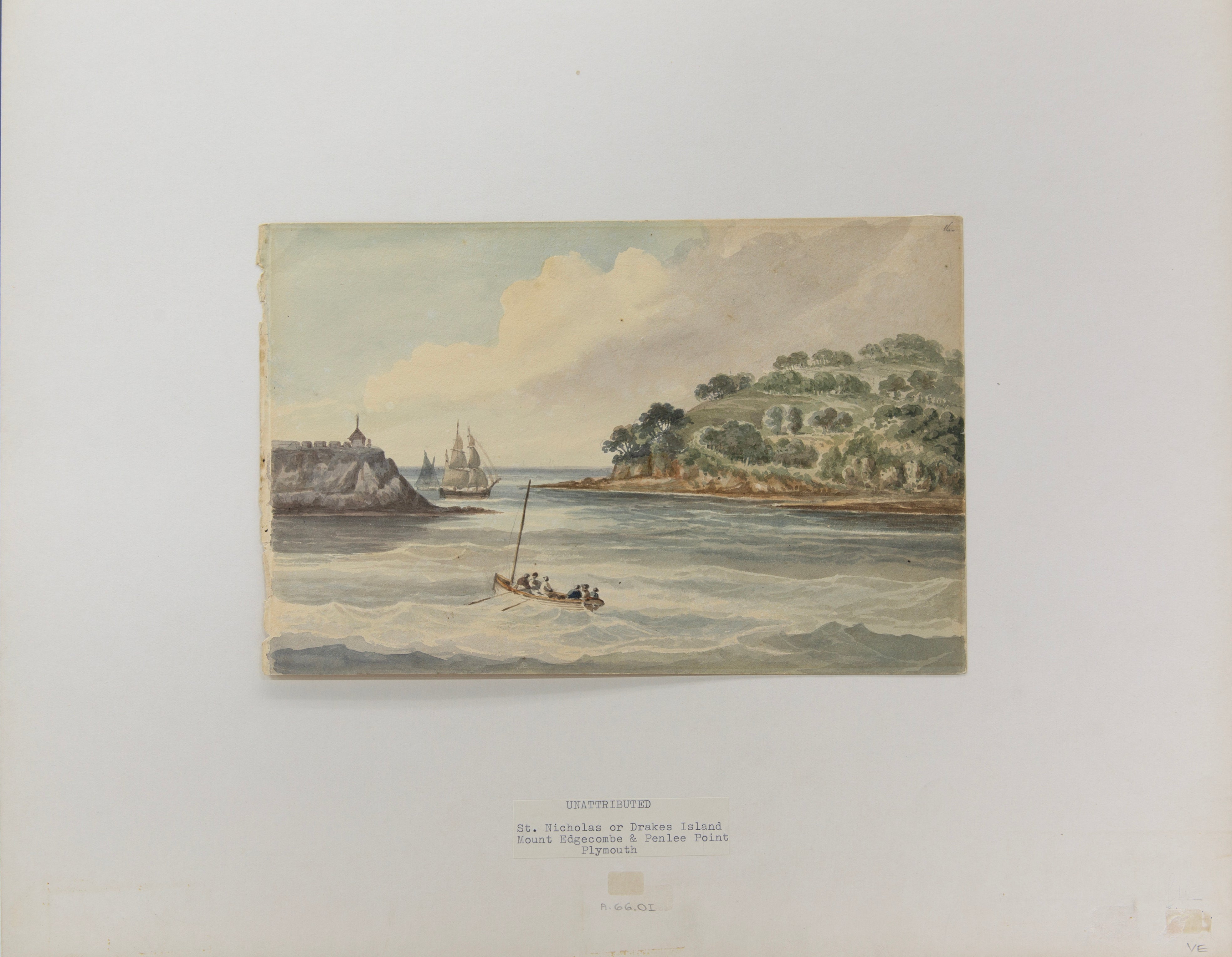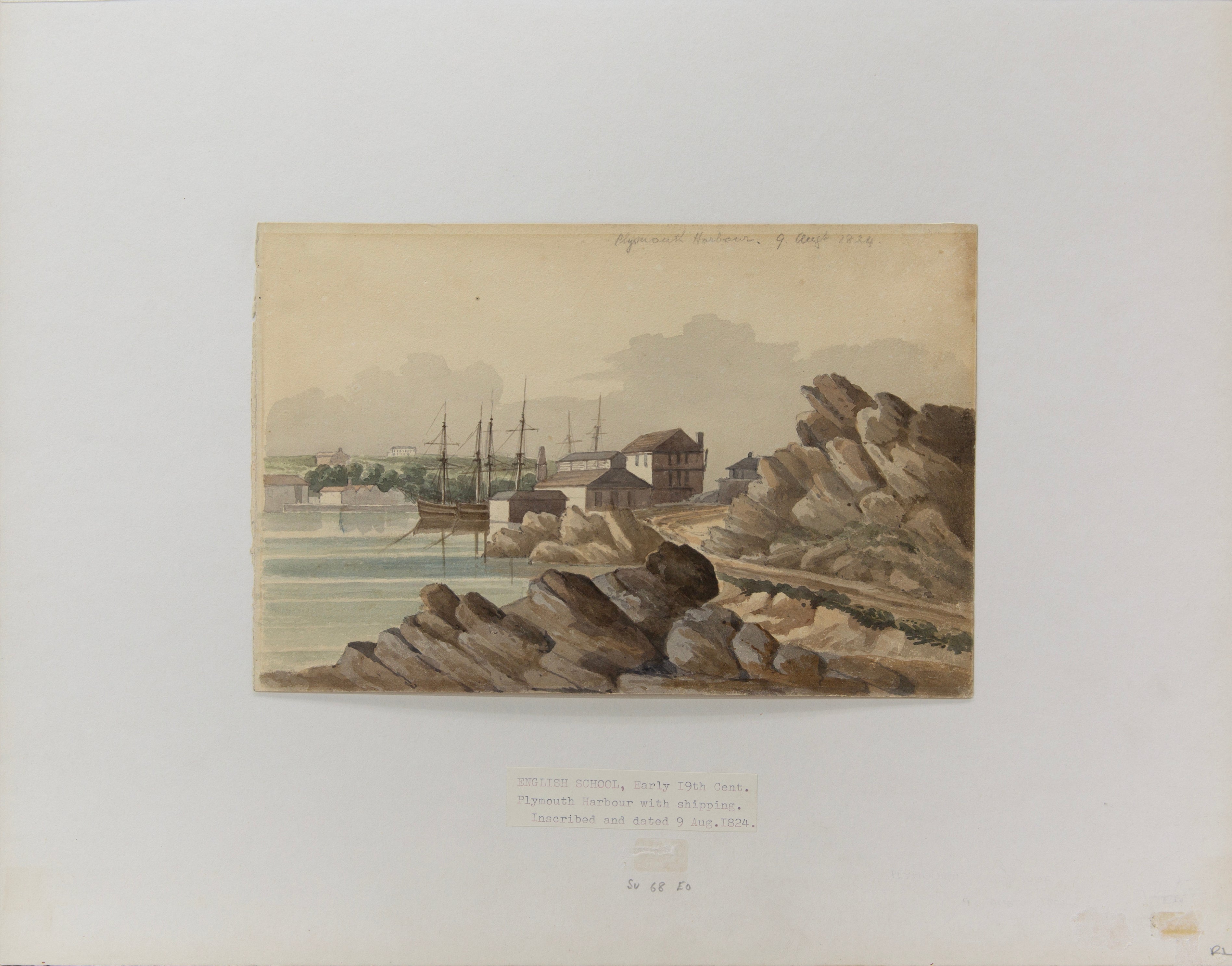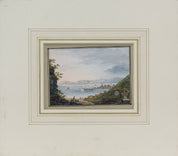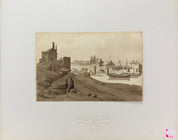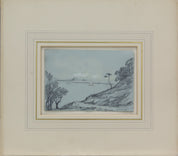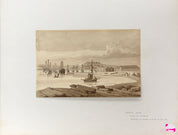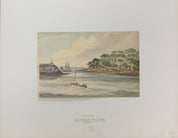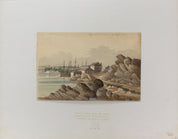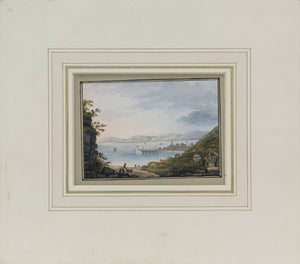Edgecombe Mountains and Plymouth Harbour View
Rev. John Swete
Artwork Details
Artwork Description
Title:Edgecombe Mountains and Plymouth Harbour View
Artist
Rev. John Swete (Ashburton, 1752–1821)
Date
1824
Medium:
Works on paper
Dimensions
Each 6.6 x 10.2 in (16.8 x 26 cm), set of 6 works
1. Artwork Identification
This rare suite of six maritime and coastal views by Rev. John Swete captures the natural and nautical grandeur of Plymouth Harbour and the surrounding Edgecombe landscape. Rendered with precise yet lyrical control in watercolor and ink, the compositions depict early 19th-century shipping scenes, harborside structures, and panoramic coastal elevations. One of the views is inscribed and dated 1824. Executed in a mix of sepia, blue-gray, and delicate washes, each work is mounted on archival board and presented with elegant bevelled mats. The paper shows slight yellowing consistent with age but is otherwise in very good condition.
2. Artistic Style and Influences
Swete’s works demonstrate the refined observational drawing typical of the English topographical tradition, influenced by artists such as William Gilpin and Thomas Hearne. His crisp, accurate linework and luminous handling of wash convey both a documentary sensibility and an appreciation for the sublime in nature. As a gentleman amateur of the Enlightenment era, Swete’s work also reflects the picturesque aesthetic, balancing compositional clarity with atmospheric depth.
3. Historical Context
Born John Tripe and later adopting the name Swete, the reverend was both an Anglican clergyman and a dedicated topographer. He is best remembered for his meticulously illustrated journals documenting travels through Devonshire. His practice combined literary description with visual recording, contributing significantly to the cultural memory of the English West Country. These six drawings offer a window into early 19th-century Plymouth, a vital naval port during the Napoleonic era, and reflect the era’s dual fascination with exploration and romantic landscape.
4. Provenance
Provenance documentation can be provided upon contact.
5. Condition and Conservation
All six works are in very good condition with minor yellowing to the paper surfaces, expected for their age. The drawings remain clean, with no tears, foxing, or significant abrasions. The presentation mounts are clean and stable, preserving each sheet for safe long-term handling or display.
6. Artistic Significance
This collection stands as a remarkable example of Rev. John Swete’s dual legacy as both a visual chronicler and a literary voice in British antiquarian circles. These works are not only valuable for their aesthetic delicacy but also for their historic insight into England’s maritime and topographical heritage. For collectors of Georgian travel art, English coastal landscapes, or historic documentation of naval towns, this set offers both intellectual richness and visual poetry.

